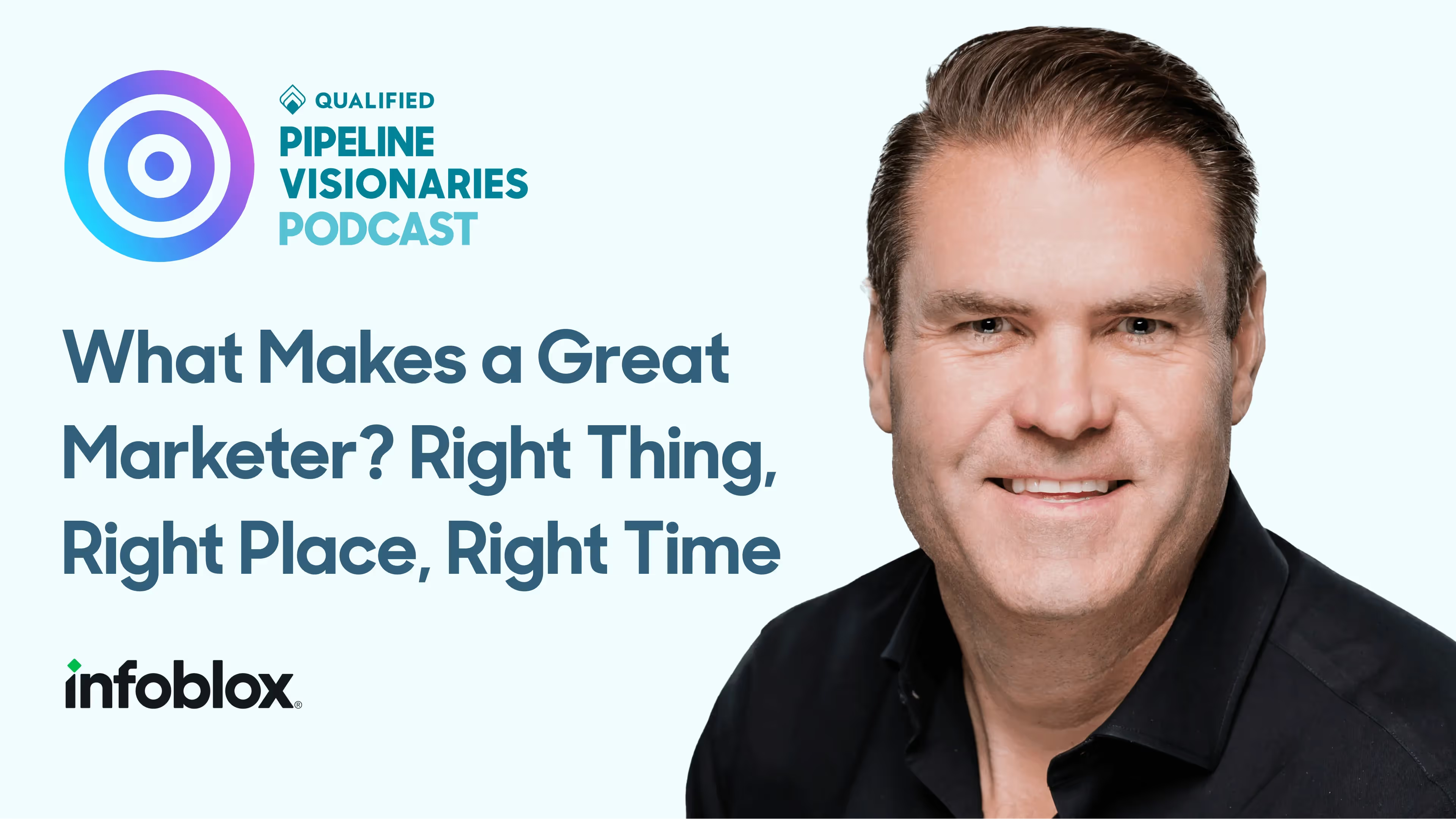What Makes a Great Marketer? Right Thing, Right Place, Right Time
Brad Rinklin, CMO at Infoblox, shares what makes a great marketer better than the average marketer.




Brad Rinklin, CMO at Infoblox, shares what makes a great marketer better than the average marketer.

This episode features an interview with Brad Rinklin, CMO at Infoblox, a Computer and Network Security company that unites networking and security to deliver unmatched performance and protection for a world that never stops.
In this episode, Brad shares with us how Infoblox is expanding its buyer persona reach, what a modern marketing team looks like, and the importance of adapting to whatever your data tells you. Brad also talks about what makes a great marketer better than the average marketer - creating the right thing, in the right place, at the right time.
Key Takeaways:
Stay up to date with weekly drops of fresh B2B marketing and sales content.
Brad Rinklin, CMO at Infoblox, shares what makes a great marketer better than the average marketer.


This episode features an interview with Brad Rinklin, CMO at Infoblox, a Computer and Network Security company that unites networking and security to deliver unmatched performance and protection for a world that never stops.
In this episode, Brad shares with us how Infoblox is expanding its buyer persona reach, what a modern marketing team looks like, and the importance of adapting to whatever your data tells you. Brad also talks about what makes a great marketer better than the average marketer - creating the right thing, in the right place, at the right time.
Key Takeaways:
Stay up to date with weekly drops of fresh B2B marketing and sales content.
Brad Rinklin, CMO at Infoblox, shares what makes a great marketer better than the average marketer.


This episode features an interview with Brad Rinklin, CMO at Infoblox, a Computer and Network Security company that unites networking and security to deliver unmatched performance and protection for a world that never stops.
In this episode, Brad shares with us how Infoblox is expanding its buyer persona reach, what a modern marketing team looks like, and the importance of adapting to whatever your data tells you. Brad also talks about what makes a great marketer better than the average marketer - creating the right thing, in the right place, at the right time.
Key Takeaways:
Stay up to date with weekly drops of fresh B2B marketing and sales content.
Brad Rinklin, CMO at Infoblox, shares what makes a great marketer better than the average marketer.



This episode features an interview with Brad Rinklin, CMO at Infoblox, a Computer and Network Security company that unites networking and security to deliver unmatched performance and protection for a world that never stops.
In this episode, Brad shares with us how Infoblox is expanding its buyer persona reach, what a modern marketing team looks like, and the importance of adapting to whatever your data tells you. Brad also talks about what makes a great marketer better than the average marketer - creating the right thing, in the right place, at the right time.
Key Takeaways:
Discover how we can help you convert more prospects into pipeline–right from your website.